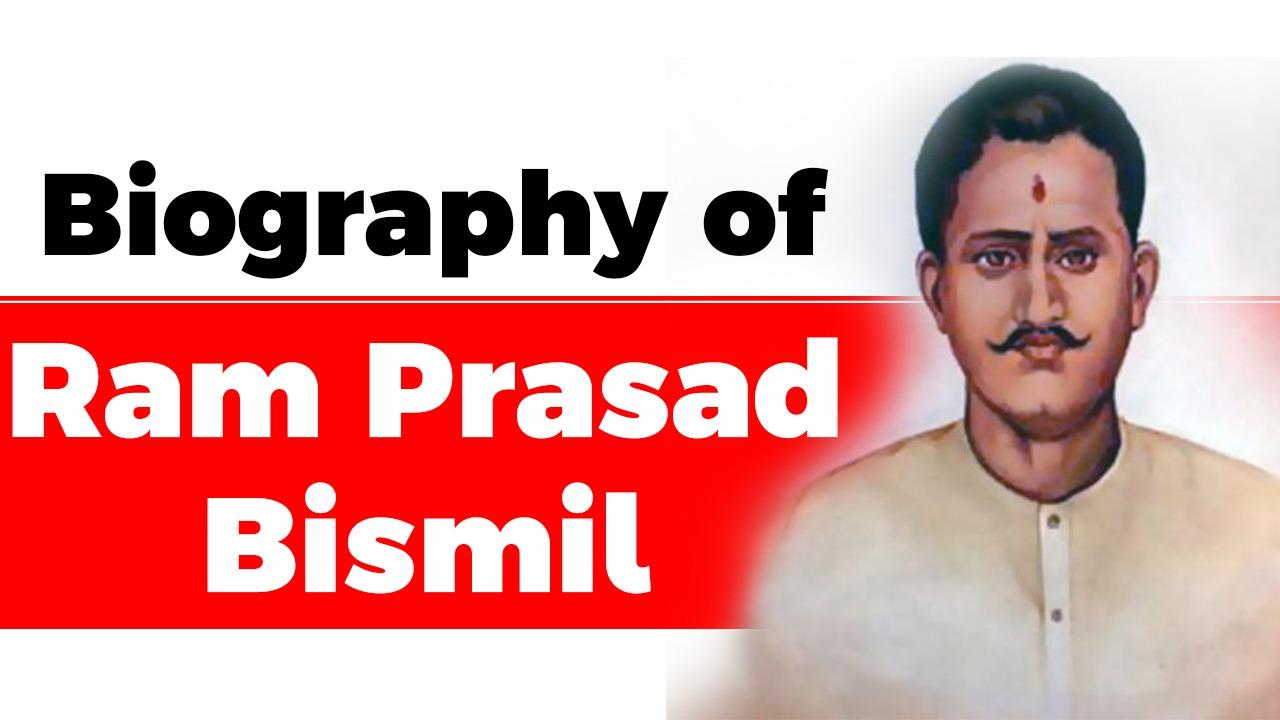Table of Contents
EARLY LIFE
- Born on June 11, 1897, in Uttar Pradesh’s Shajahanpur to Murlidhar and Moolmati, Bismil grew up in a village in the the Chambal valley. As a teenager, he witnessed the brutal atrocities that Britain’s colonial rule kept inflicting on India. Deeply affected, he began leaning towards revolutionary ideals.
- As much at ease with the pen as he was adept at wielding the pistol, Bismiljoined hands with Bengali revolutionaries, Sachindra Nath Sanyal and Jadugopal Mukherjee, to found Hindustan Republican Association — a revolutionary organisation in north India that had vowed to set India free from the shackles of British rule.
AZADI
- At HRA, Bismil borrowed money from his staunchly patriotic mother, Moolmati, to write and publish books (such as Deshvasiyon ke Naam, Swadeshi Rang, Man ki Lahar and Swadhinta ki Devi) to draw public attention to their cause and bring in much-needed money.
- This was also when he met and became close friends with other leading figures of the revolutionary freedom struggle such as Ashfaqullah Khan, Roshan Singh and Rajender Lahiri.
AZADI
- Furthermore, the charismatic poet played a key role in bringing dynamic youngsters like Chandrashekhar Azad and Bhagat Singh into the folds of HRA, which later became Hindustan Socialist Republican Association (HSRA).
- Bismil formed a revolutionary organisation called Matrivedi (Altar of Motherland).Dixit had contacts with some powerful dacoits of the state. Dixit wanted to utilise their power in the armed struggle against the British rulers.
- He organised youths from the Etawah, Mainpuri, Agra and Shahjahanpur districts of United Province (now Uttar Pradesh) to strengthen their organisations.
AZADI
- On 28 January 1918, Bismil published a pamphlet titled Deshvasiyon Ke Nam Sandesh , which he distributed along with his poem Mainpuri Ki Pratigya.
- To collect funds for the party looting was undertaken on three occasions in 1918. Police searched for them in and around Mainpuri while they were selling books proscribed by the U.P. Government in the Delhi Congress of 1918.
- When police found them, Bismil absconded with the books unsold. When he was planning another looting between Delhi and Agra, a police team arrived and firing started from both the sides. Bismil jumped into the Yamuna and swam underwater.
HSRA
- From 1919 to 1920 Bismil remained inconspicuous, moving around various villages in Uttar Pradesh and producing several books. Among these was a collection of poems written by him and others, entitled Man Ki Lahar.
- Constitutional Committee Meeting was conducted on 3 October 1924 at Kanpur in U.P. under the Chairmanship of Sachindra Nath Sanyal.
- This meeting decided the name of the party would be the Hindustan Republican Association (HRA). After a long discussion from others Bismil was declared there the District Organiser of Shahjahanpur and Chief of Arms Division.
HSRA
- A pamphlet entitled as The Revolutionary was distributed throughout the United Province in India about the end of January 1925.
- It was nothing but the Manifesto of H.R.A. in the form of a four paged printed pamphlet on white paper which was circulated secretly by post and by hands in most of the districts of United Province and other parts of India.
- This pamphlet bore no name of the printing press. The heading of the pamphlet was: “The Revolutionary” (An Organ of the Revolutionary Party of India).The date of its publication was given as 1 January 1925.
AZADI
- On 9 August 1925, Ashfaqulla Khan and other revolutionaries, namely Ram Prasad Bismil, Rajendra Lahiri, Thakur Roshan Singh, Sachindra Bakshi, Chandrashekar Azad, Keshab Chakravarty, Banwari Lal, Mukundi Lal, Manmathnath Gupta looted the train carrying British government money in Kakori near Lucknow.
- On the morning of 26 September 1925, Bismil was caught by the police and Ashfaqulla Khan was the only one untraced by the police.
- Ashfaqullah Khan was detained in the Faizabad jail and a case was filed against him. His brother Riyasatullah Khan was his legal counsel.
PUNISHMENTS
- The punishments given were as follows:
- Death sentence: Ram Prasad Bismil, Thakur Roshan Singh, Rajendra Nath Lahiri and Ashfaqullah Khan
- Deportation to Kālā Pānī: Shachindra Nath Sanyal and Sachindra Bakshi
- 14 years’ imprisonment: Manmath Nath Gupta
- 10 years’ imprisonment: Yogesh Chandra Chatterjee, Mukundi Lal, Govid Charan Kar, Raj Kumar Singh and Ram Krishna Khatri
- 7 years’ imprisonment: Vishnu Charan Dublish, Suresh Charan Bhattacharya
- 5 years’ imprisonment: Bhupen Nath Sanyal, Prem Krishna Sharma
- 4 years’ imprisonment: Keshab Chakravarthy
SHAHEED
- The case for the Kakori dacoity was concluded by awarding death sentence to Bismil, Ashfaqulla Khan, Rajendra Lahiri and Thankur Roshan Singh. The others were given life sentences.
- Following 18 months of legal process, Bismil, Ashfaqulla Khan, Roshan Singh and Rajendra Nath Lahiri were sentenced to death. Bismil was hanged on 19 December 1927 at Gorakhpur Jail
Biography Free PDF






















 WhatsApp
WhatsApp